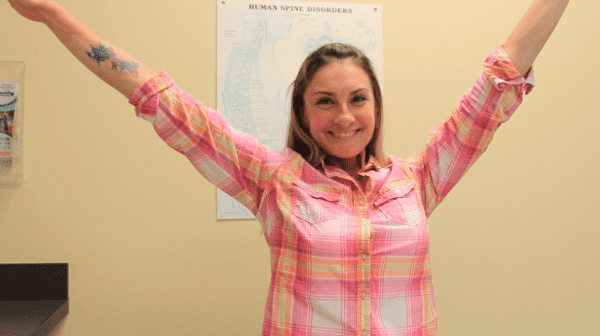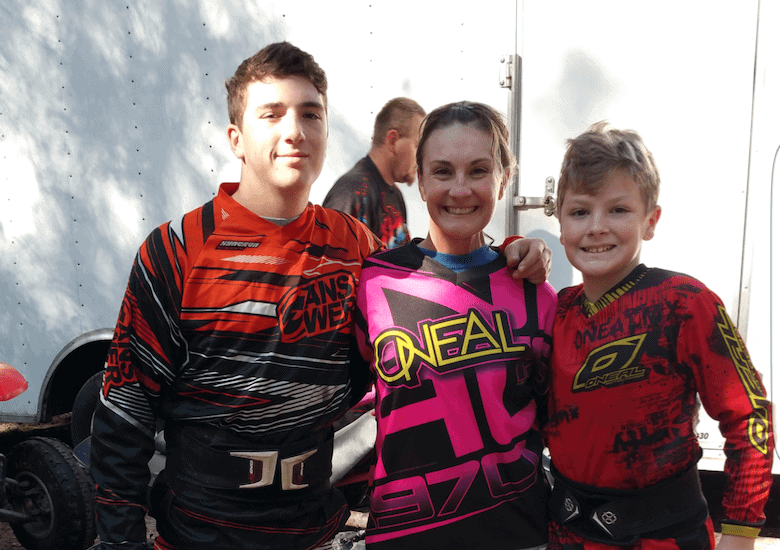Winged Scapula Repair Helps Local Mom Return to Work and Great Outdoors
- How Can Muscle Transfer Surgery Repair Nerve Damage and a Winged Scapula?
- What Is Recovery Like After Muscle Transfer Surgery for a Winged Scapula?
For Tiffany Demarest, a damaged nerve in her neck from a previous surgeon’s operation left her in significant pain, unable to lift her arm to perform tasks at work or enjoy the great outdoors with her family.
In search of relief, Tiffany turned to Michael D. Riggenbach, M.D., a board certified orthopaedic surgeon at Orlando Orthopaedic Center specializing in hand and upper extremity surgery, peripheral nerve surgery and microsurgery. He told her she would require a muscle transfer to repair her winged scapula.
“I had surgery with Dr. Riggenbach back in March [of 2016] to fix my shoulder,” says Tiffany. “Here I am almost a year later and I’m back to doing pretty much everything I was doing beforehand: I’m able to do my job, take care of my kids, dress myself, I’m able to ride my ATV and just have a good time with my family and enjoy life again.”
How Can Muscle Transfer Surgery Repair Nerve Damage and a Winged Scapula?

Tiffany after muscle transfer surgery for winged scapula
According to Dr. Riggenbach, she sustained nerve damage in her neck from a previous biopsy procedure. Tiffany lost the function of many of the muscles around her shoulder blade, leaving her in severe discomfort with substantial loss of movement in her arm and a winged scapula.
“A winged scapula is a painful misaligned shoulder blade that prevents movements at or above shoulder level,” says Dr. Riggenbach. “It can be very limiting to everyday life.”
After a physical examination and testing with Dr. Riggenbach, he explained that muscle transfer surgery was her best option.“(Dr. Riggenbach) went over the tests with us, told us exactly what was going on, and said the nerve was pretty much gone,” says Tiffany. The only way to repair the damage after a nerve injury that occurred years ago is to transfer working muscles to that area (the shoulder blade in this case) because the normal muscles have stopped working.
“What we were able to do with Tiffany is move special muscles around the shoulder blade that were still functioning to recreate the function of the paralyzed muscles,” says Dr. Riggenbach. “This allowed her to move her arm overhead and decrease her pain levels. She has done exceptionally well, has little to no pain now, can move her arm over her head and do most things without any difficulty.”
What Is Recovery Like After Muscle Transfer Surgery for a Winged Scapula?

Tiffany with her family.
Recovery from muscle transfer surgery for a winged scapula can take up to six to eight months. The arm may be immobilized for the first few weeks, with gentle motion exercises employed thereafter, to gradually restore the shoulder’s range of motion and alleviate discomfort in the arm.
“When I saw Dr. Riggenbach again seven weeks after surgery, he was amazed by the way the surgery worked and how my shoulder blades were perfect when he lined them up,” says Tiffany. “It’s a long haul, but it was worth it. I have my life back now. Being able to dress myself, bathe myself, ride my four-wheeler, take care of my kids, and do what I love to do is a blessing that I thought I would never have back again.”
Following her successful shoulder surgery, Tiffany is grateful to Dr. Riggenbach and the entire Orlando Orthopaedic Center staff. “I can’t thank him enough for what he did, for fixing me, for making me better, and giving me my life back,” she says.
“I would recommend him to anybody who needed his assistance. He’s just an excellent doctor and I couldn’t have asked for a better one.”


